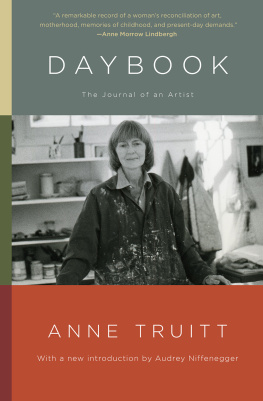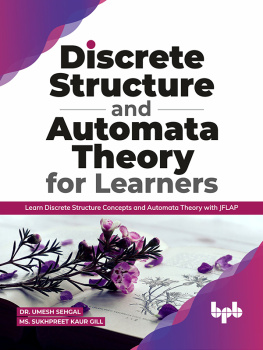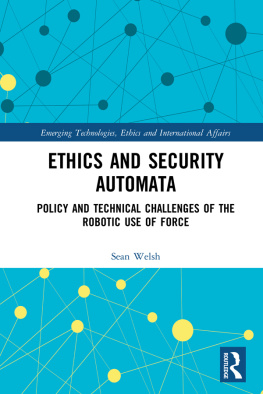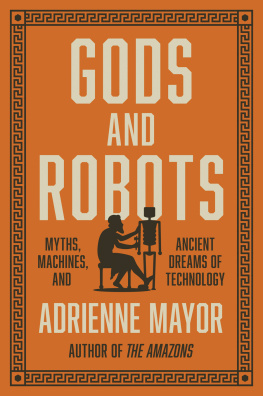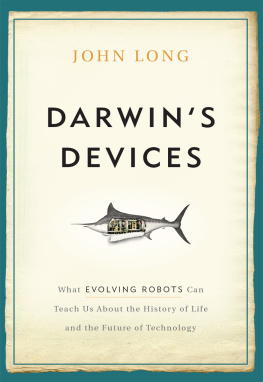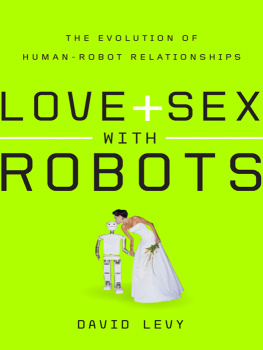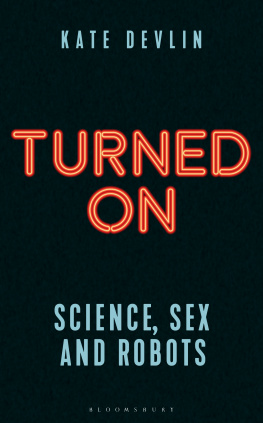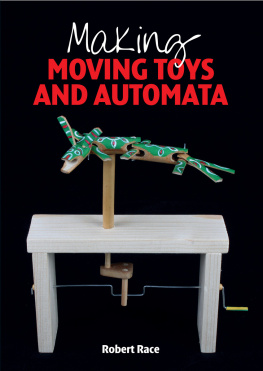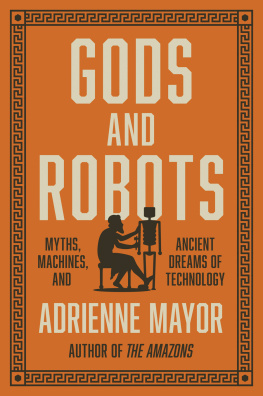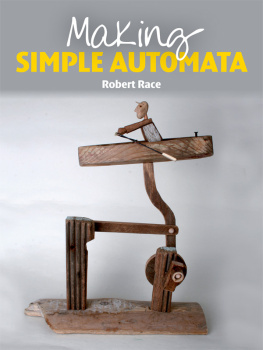Medieval Robots
THE MIDDLE AGES SERIES
Ruth Mazo Karras, Series Editor
Edward Peters, Founding Editor
A complete list of books in the series
is available from the publisher.
Medieval Robots

Mechanism, Magic, Nature, and Art
E. R. Truitt


This book is made possible by a collaborative grant
from the Andrew W. Mellon Foundation.
Copyright 2015 University of Pennsylvania Press
All rights reserved. Except for brief quotations used for
purposes of review or scholarly citation, none of this book
may be reproduced in any form by any means without written
permission from the publisher.
Published by
University of Pennsylvania Press
Philadelphia, Pennsylvania 19104-4112
www.upenn.edu/pennpress
Printed in the United States of America on acid-free paper
1 3 5 7 9 10 8 6 4 2
Library of Congress Cataloging-in-Publication Data
ISBN 978-0-8122-4697-1
To Katharine Park, doctor mirabilis
CONTENTS

ABBREVIATIONS

ACMRS | Arizona Center for Medieval and Renaissance Studies |
AHR | American Historical Review |
AN | Archives Nationales de France |
BGPM | Beitrge zur Geschichte der Philosophie des Mittelalters |
BL | British Library |
BnF | Bibliothque Nationale de France |
CCM | Cahiers de Civilisation Mdivale |
CNRS | ditions du Centre National de la Recherche Scientifique |
Dehaisnes, Lille | Inventaires-Sommaires des Archives dpartmentales antrieures 1790, Nord: Archives civiles, Srie B, ed. Chrtien Dehaisnes, Lille, 1881 |
EETS | Early English Text Society |
GRA | Gesta regum Anglorum |
HDT | Historia destructionis Troiae |
MGH, SS. F. et Q. | Monumenta Germaniae Historica, Scriptores in Folio et Quarto |
MGH, SS. Ldl. | Monumenta Germaniae Historica, Scriptores Libelli de lite imperatorum et pontificum |
MGH, SS. rer. Ger. | Monumenta Germaniae Historica, Scriptores rerum Germanicarum |
MGH, SS. rer. Mer. | Monumenta Germaniae Historica, Scriptores rerum Merovingicarum |
MRTS | Medieval and Renaissance Texts and Studies |
MT | Mandevilles Travels, ed. M. C. Seymour. Oxford: Clarendon, 1967 |
OED | Oxford English Dictionary |
PIMS | Pontifical Institute of Medieval Studies |
PL | Patrologiae cursus completus, Series Latina, ed. Jean-Paul Migne, Paris, 184464 |
PMLA | Proceedings of the Modern Language Association |
Richard, Arras | Inventaire-Sommaire des Archives dpartmentales antrieures 1790, Pas-des-Calais, Archives civiles, Series A, ed. Jules-Marie Richard, Arras, 1878 |
RS | Rerum Britanicarum Medii Aevi, Rolls Series |
SAC | Studies in the Age of Chaucer |
SATF | Socit des Anciens Textes Franais |
TAPS | Transactions of the American Philosophical Society |
TBJM | The Book of John Mandeville |
Medieval Robots
INTRODUCTION

The Persistence of Robots: An Archaeology of Automata
Golden birds and beasts, musical fountains, and robotic servants astound and terrify guests. Brass horsemen, gilded buglers, and papier-mch drummers mark the passage of time. Statues of departed lovers sigh, kiss, and pledge their love. Golden archers and copper knights warn against danger and safeguard borders. Mechanical monkeys, camouflaged in badger pelts, ape human behavior in the midst of a lush estate. Corpses, perfectly preserved by human art, challenge the limits of life. Brazen heads reveal the future, and a revolving palace mimics the revolution of the spheres. Medieval robots, both actual and fictional, take many forms.
And they were far more than delightful curiosities. Automata stood at the intersection of natural knowledge (including magic) and technology, and they embodied many themes central to medieval learned culture. Indeed, automata were troubling links between art and nature. They illuminated and interrogated paired ideas about life and death, nature and manufacture, foreign and familiar. They performed a multitude of social and cultural functions: entertainment, instruction, prophecy, proxy, discipline, and surveillance. Automata enlivened courtly pageantry and liturgical ritual throughout the Middle Ages. They appear in historia and romanz, in travelogues and encyclopedias, in chronicles and chansons. By excavating the complex history of medieval automata, we can begin to understand the interdependence of science, technology, and the imagination in medieval culture and between medieval culture and modernity.
Medieval Robots identifies and explores the multiple kinds and functions of automata in the Latin Middle Ages, and demonstrates that these objects Thinking with automata persisted throughout the Byzantine regions and the Islamicate world through late antiquity and the medieval period. Yet in the Latin Christian West, mechanistic thinking largely disappeared as a way of knowing until the turn of the fourteenth century. Before that, mechanical objects from outside the Latin West were understood within it according to a different intellectual framework, one in which magic predominated. The chronological scope of this book encompasses this intellectual transformation: I begin at the start of the ninth century, with the arrival of the first mechanical automaton in the Latin West, from Baghdad, and conclude in the middle of the fifteenth century, when mechanical knowledge in Europe allowed for the design and construction of automata within a framework of local, familiar knowledge.
All the objects in this book have two things in common: they were apparently self-moving or self-sustaining manufactured objects, and they mimicked natural forms. Medieval writers, artisans, and artists did not have a fixed term, or even a set of terms to refer to these objects. Automaton is an early modern coinage. It came into popular use in sixteenth-century France after Rabelais used
Next page

